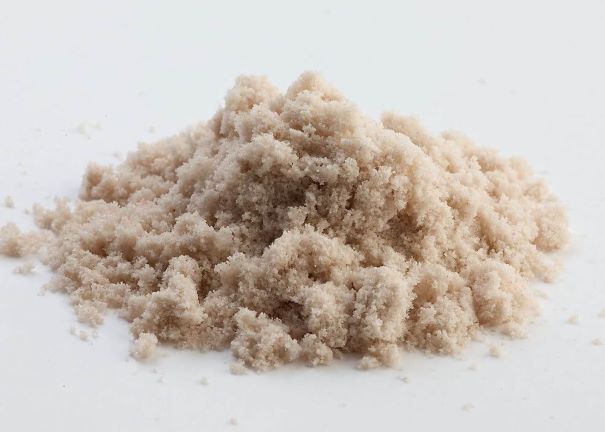
The “Mo” of “Moshio (藻塩)” means “seaweed (海藻)” and “shio” means “salt (塩).” The only ingredient in Moshio is Hondawara, a type of seawater and seaweed. It is also called Mojio.
The way it is made is extremely primitive. First, Hondawara (Gulfweed), etc. is soaked in seawater then wrung out and dried multiple times over 2 to 3 days. This creates a brown-colored seawater infused with the umami and color of Hondawara. In the end, Hondawara is dried and grilled, then the charcoal ash is mixed with the seawater infused with the umami and color. This is left for a day, where the ash naturally sinks to the bottom, completing the dark-brown seawater. Moshio is made by boiling down this seawater. This is said to be the origin of salt-making far longer ago than the manufacturing method of using salt farms.
A former chef from a Michelin-starred sushi restaurant uses a blend of red vinegar and moshio to make sushi rice. While searching for the perfect rice to complement various toppings, he serendipitously discovered Moshio. After much trial and error, he perfected a versatile sushi rice recipe with Moshio, claiming that it enhances both red- and white-fleshed fish.
It is characteristic in that there is no sharp spiciness and it has a very mellow flavor, so it brings out the taste of the elements of seafood, etc. The color is a light beige and the salt can be called a concentration of umami made from nothing but seawater and seaweed. Perhaps switching to Moshio is a good idea.
Sushi restaurants that use moshio (seaweed salt)
・Sushi Fukumoto
・Sushi Dai
・Yoshino sushi honten
・Sushi Iwamoto
・Sushi Haka
・Sushi Ichi
・Sushi Inukai
Related contents: Nikkei Style
[sc_apply url=”https://sushiuniversity.jp/apply/”]
We hope this information will be helpful.

Revision date: December 19, 2025
Share this article